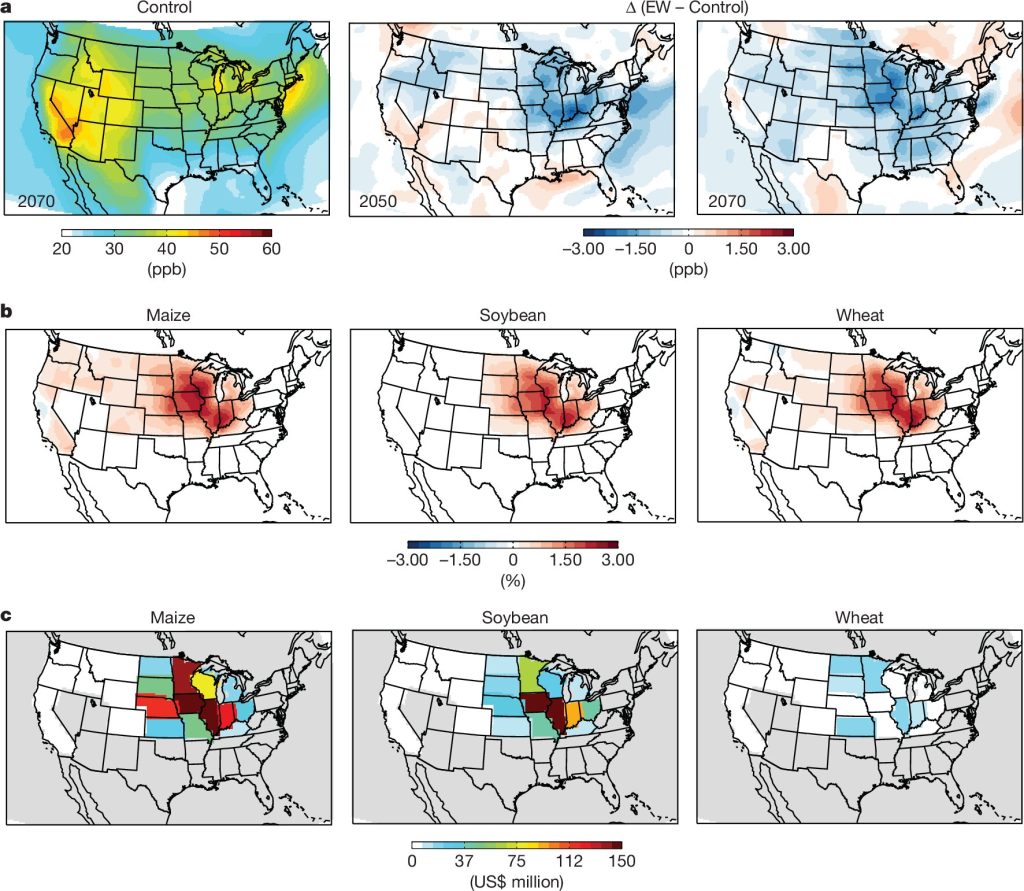
A new study reveals that implementing enhanced weathering (EW), the practice of adding crushed basalt to soils, with U.S. agriculture could remove between 160 and 300 million metric tons of carbon dioxide (CO2) from the atmosphere annually by 2050, rising to 250 to 490 million tons of CO2 removal by 2070.
Conducted by a team of researchers led by Professor David Beerling at the Leverhulme Center for Climate Change Mitigation, University of Sheffield, the study, published in Nature, offers the first detailed analysis of EW’s potential and costs in the U.S. over the next 50 years.
The authors demonstrate that this approach could make a significant previously overlooked contribution (16%–30%) to the U.S.’s 2050 carbon removal required to meet its net-zero emissions targets. This new study provides much-needed economic and feasibility detail on a state-by-state basis for how enhanced weathering can support the U.S. commitment to net-zero emissions by 2050.
Deployment of enhanced weathering could be straightforward, as it utilizes existing agricultural infrastructure and offers lower carbon removal costs compared to alternative strategies like direct air capture and bioenergy with carbon capture and storage. The authors point out, however, that mobilizing an EW industry at the necessary scale could take decades.
The authors identify uncertainties and research priorities for assessing carbon removal by enhanced weathering with agriculture that must be addressed to build confidence in EW as a CDR technology to enable it to scale responsibly.
The authors’ regional analyses show EW could improve air quality by interacting with the soil nitrogen cycling processes to reduce the formation of harmful air pollutants like ozone and fine particulate matter, which pose risks to human health, crop productivity, and ecosystems.

Societal acceptance will also be crucial, requiring engagement from national politics to local communities and farmers. While basalt mining operations could generate additional employment opportunities and contribute to local economies, it is essential that these activities respect community concerns and ensure fair practices.
Professor Beerling, Director of the Leverhulme Center for Climate Change Mitigation, said, “What we’re proposing could offer a genuine step-change in how the U.S. captures carbon to meet its increasingly urgent net zero target and safeguard our planet’s future. Our analysis demonstrates that the relatively simple and practical method of enhanced weathering, using the abundant rock basalt, could remove hundreds of millions of tons of carbon dioxide annually in the U.S. alone.”
Dr. Euripides Kantzas, an author of the study, said, “We simulate pathways for unlocking the potential of enhanced weathering for the continental United States. Significant uncertainties remain in the quantification of carbon removal fluxes in the field, requiring the adoption of industry-standard Monitoring-Reporting-Verification protocols. Integrating accurate field measurements into simulations will help reduce model uncertainties.”
Discover the latest in science, tech, and space with over 100,000 subscribers who rely on Phys.org for daily insights.
Sign up for our free newsletter and get updates on breakthroughs,
innovations, and research that matter—daily or weekly.
Dr. Maria Val Martin, a Future Leaders fellow and partner in the study at the University of Sheffield, said, “Enhanced weathering not only captures carbon and reduces soil N2O emissions but also provides cleaner air by reducing harmful pollutants like ground-level ozone and fine particulate matter. Our study underscores the importance of including air quality assessments when proposing large-scale deployment of CDR strategies.”
Dr. Noah Planavsky at Yale University, an author of the study, said, “Massive amounts of carbon dioxide removal are needed for meeting climate goals. Our work strengthens the case that enhanced weathering can drive large amounts of carbon removal while helping farmers and strengthening rural economies.”
Dr. James Hansen, at Columbia University, said, “Ongoing acceleration of global warming calls for urgent reduction of fossil fuel emissions and actions to mitigate climate change. Our analysis lays out for U.S. policymakers the overlooked potential and wider benefits of enhanced weathering in U.S. agriculture.”
More information:
David J. Beerling et al, Transforming US agriculture for carbon removal with enhanced weathering, Nature (2025). DOI: 10.1038/s41586-024-08429-2
Provided by
University of Sheffield
Citation:
Enhanced weathering could transform US agriculture for atmospheric CO₂ removal (2025, February 7)
retrieved 8 February 2025
from https://phys.org/news/2025-02-weathering-agriculture-atmospheric.html
This document is subject to copyright. Apart from any fair dealing for the purpose of private study or research, no
part may be reproduced without the written permission. The content is provided for information purposes only.







